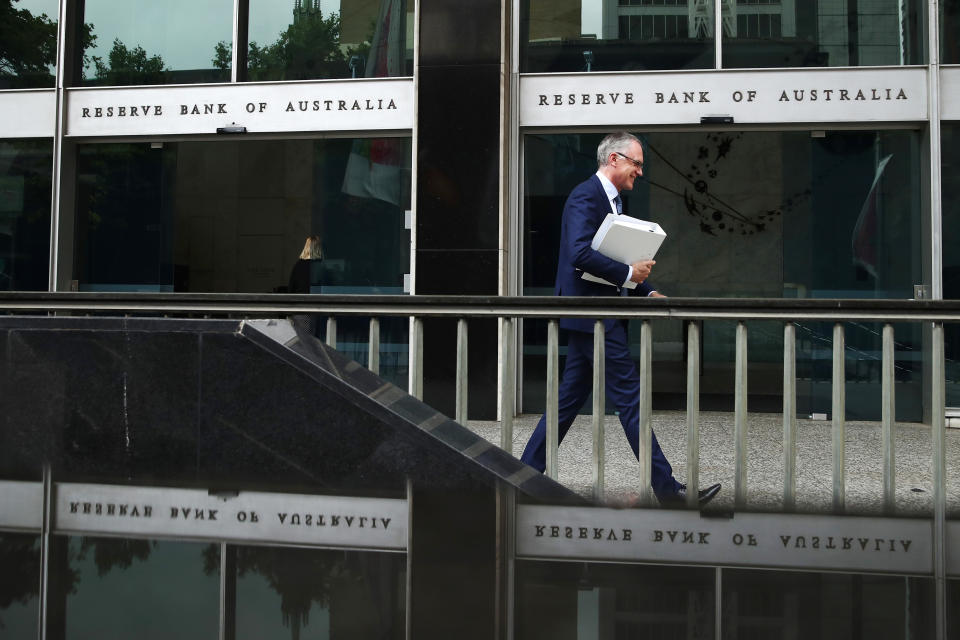'Disconcerting': 5 reasons why interest rates wont rise

Interest rates are about to rise.
So say a growing number of economists and the money market futures which are now pricing in a 25 basis point interest rate rise in the final quarter of 2018 and a further 25 basis point rise in the second quarter of 2019.
The market and many economists are increasingly optimistic that economic growth, wages and inflation will all of a sudden lift back to levels consistent with a healthy economy. The theory is that as a result of this good economic news, the hand of the RBA will be forced to hike rates from what are currently record lows.
Also read: Get ready for election economic fights in 2018
To be sure, these interest rate rises could happen over that time frame. It would be a most welcome development to see interest rates move higher as it would be a sign of a return to favourable economic conditions for the first time in many years.
But just how reliable are the forecasts and the market pricing?
The rising interest forecasts are, for the moment, overlooking a number of hard facts on the economy.
Those facts include the last two years where inflation has been below the bottom of the RBA target band, almost a decade of below trend GDP growth, wages growth stuck near record lows, the unemployment rate unable to sustain a break below 5.5 per cent and the underemployment rate just a few decimal points below a record high.
These fundamentals are, at the very least, disconcerting.
The scenario for higher interest rates is all the more problematic when account is taken of the falls in house prices now unfolding and with the Australian dollar at 80 US cents, a level that is starting to hurt the export sector.
Frankly, it is absurd to think the RBA would hike rates with this sort of scorecard on the economy.
Indeed, the persistent miss of the inflation target and the stubbornly high unemployment rate demands lower, not higher rates.
Much has been made of the record level of household debt, the vast bulk of which is leveraged in the housing market. With house prices now falling (Sydney prices are down 3 per cent since September) and household debt levels still rising, albeit at a slowing rate, the net wealth buffer that had been supporting consumer sentiment and spending will start to erode, even with unchanged interest rates.
Also importantly and quite plainly, interest needs to be paid on that high debt level.
In simple terms, 50 basis points of interest rate rises over the next 18 months would add around $8 billion to the annual interest cost of all mortgages outstanding.
Also read: Australian property will crash if THIS happens
That is $8 billion that will be diverted away from consumption, savings or debt reduction. At a time when household consumption growth is soft, this would risk pushing overall growth lower from an already soft starting point.
It is an old cliché the data will determine what happens.
But here there is a timetable of critical events in the next month that will help to flesh out the scenario for or against higher interest rates.
Critically important is next week’s inflation data. If the underlying inflation measures favoured by the RBA show yet another quarter where annual inflation is under 2.0 per cent, the case for rate hikes will be severely dented.
Also read: ‘Overstated income by 30%’ – Liar loans continue to grow
The health of consumer finances will then be tested with retail sales (6 February), employment and unemployment (15 February) and the wage price index (21 February).
Will the strong rise in retail spending inspired by the release of the latest iPhone be reversed? Will the unemployment fall from 5.5 per cent? And vitally important, will there be any evidence of upside to wages growth which is the vital element for household incomes and spending?
The answer to these questions will go some way to determining the outlook for interest rates and whether the expectations for hikes are based on wishful thinking or based on hard facts.

 Yahoo Finance
Yahoo Finance 